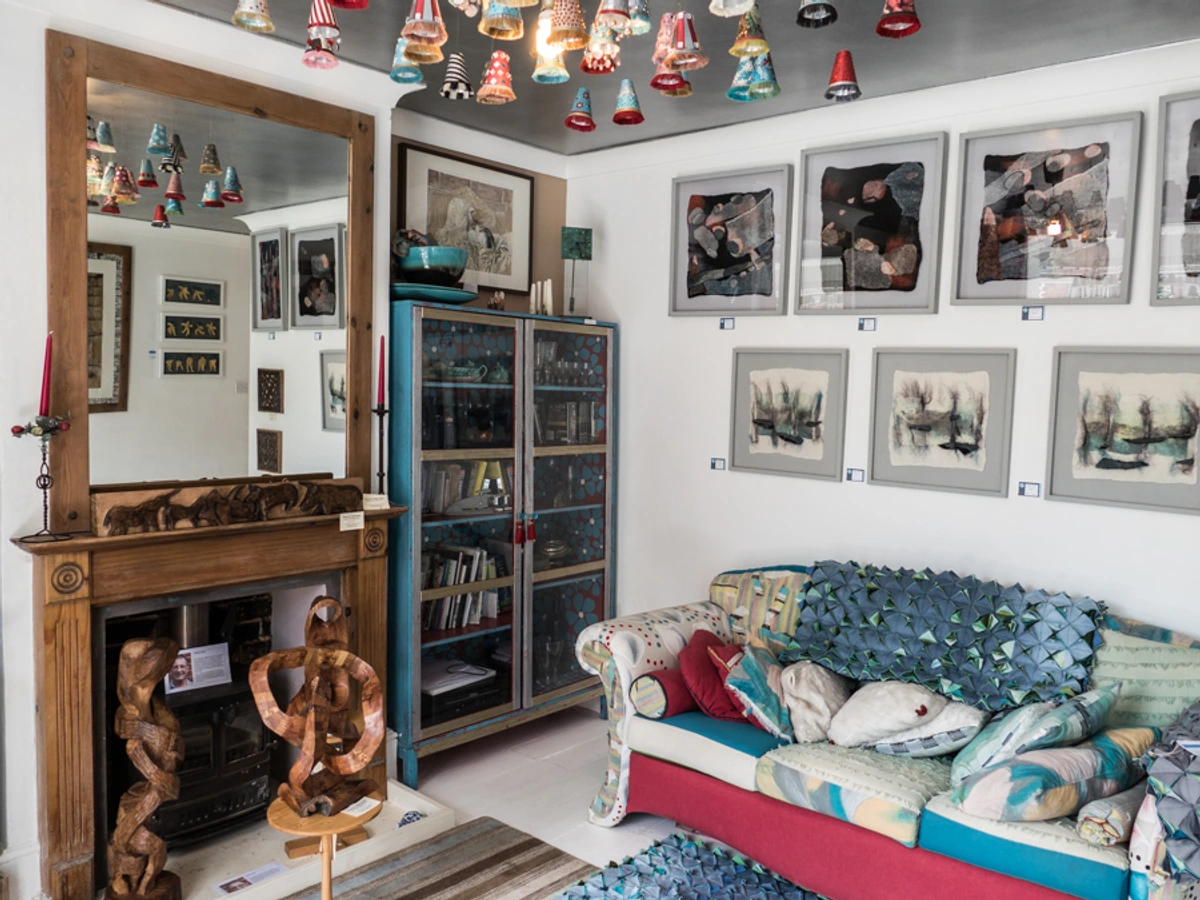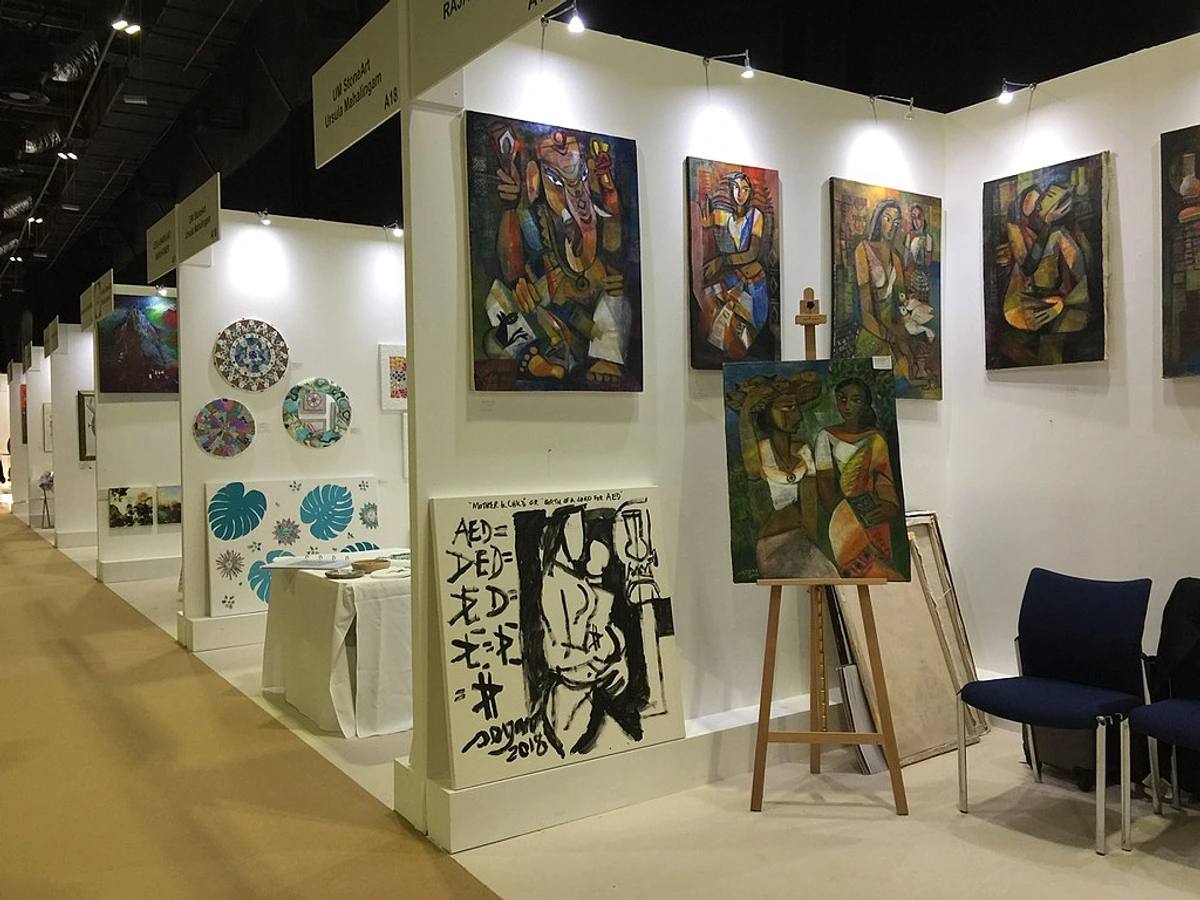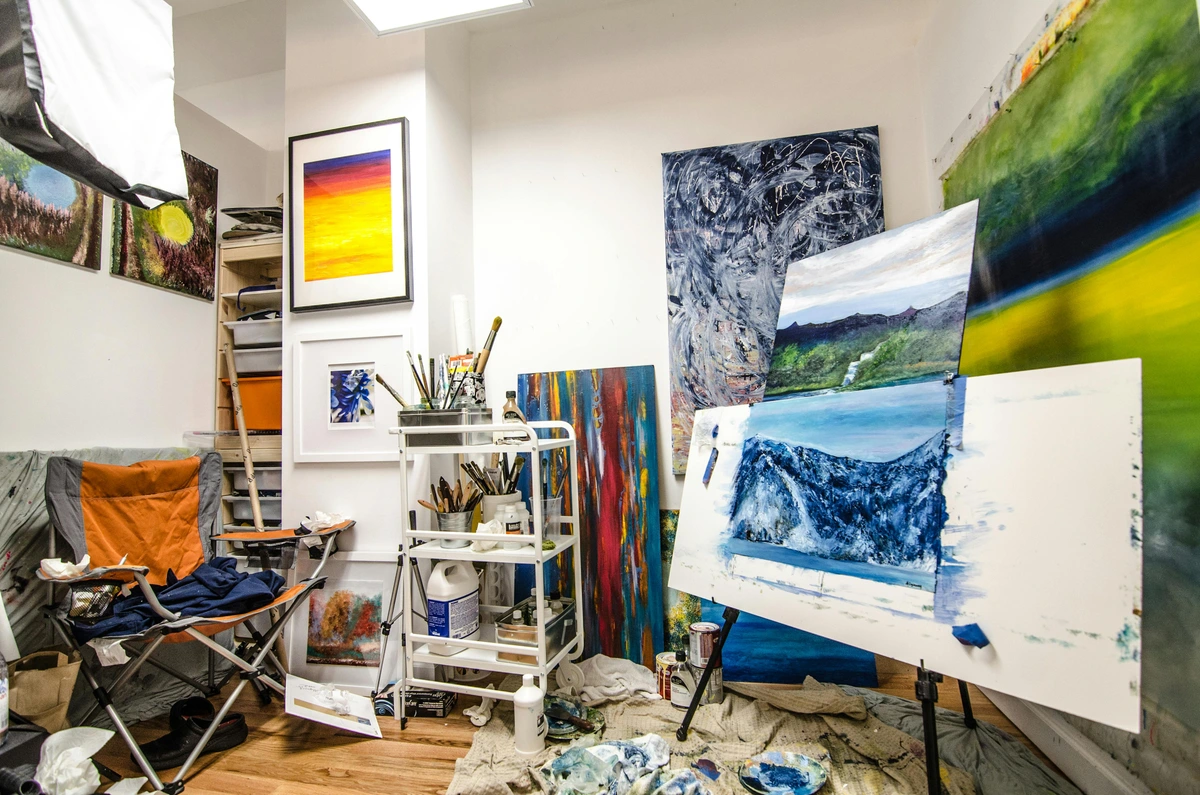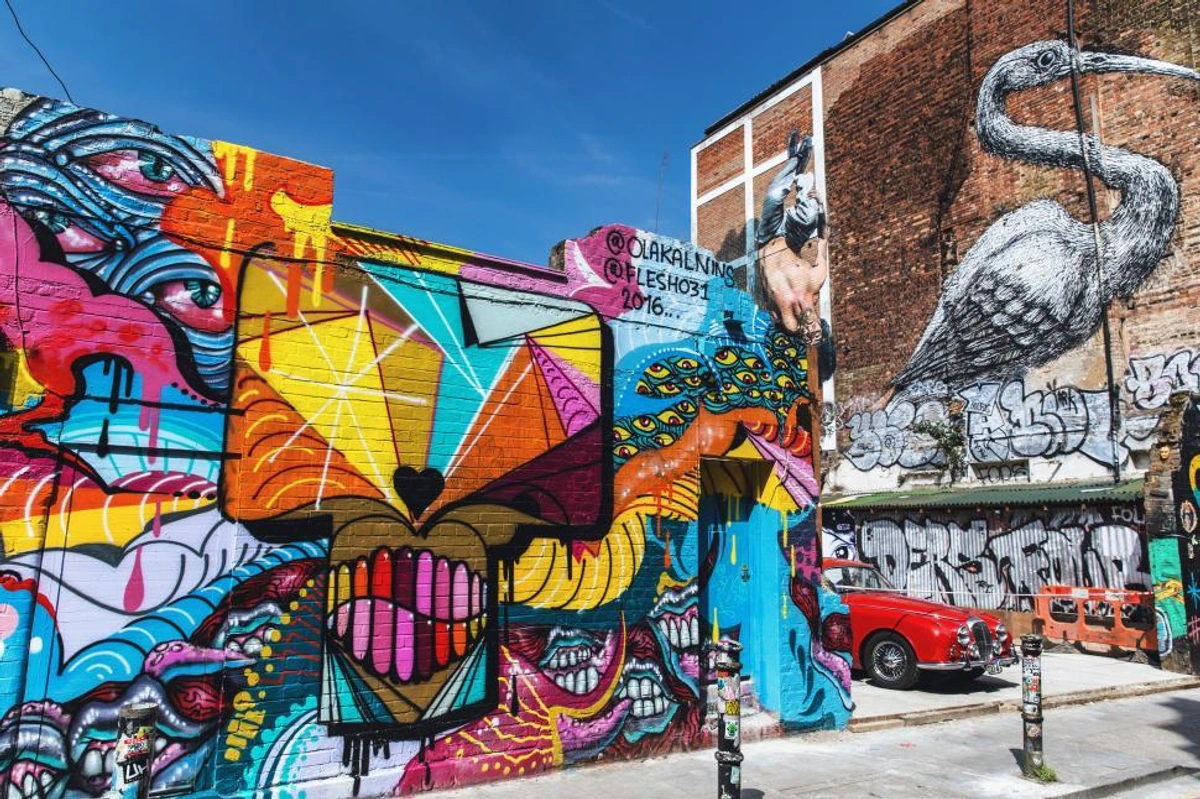
Finding Art in Unexpected Places: Cafes, Boutiques & Beyond
Go beyond museums & galleries! Discover the joy of finding unique, affordable art in unexpected places like cafes, boutiques, studios, and even street art. My personal guide to supporting local artists and starting your collection.
Finding Art in Unexpected Places: Cafes, Boutiques, Studios, and Beyond
Let's be honest. When you think about finding art, your mind probably goes straight to hushed, cavernous museums or sleek, sometimes intimidating, art galleries. And yes, those places are fantastic – treasure troves of history and contemporary brilliance. I've spent countless hours in them, both as an artist and a viewer. As someone who creates art myself (you can see my work here or learn about my journey on my timeline), I deeply appreciate these institutions.
But what if I told you that some of the most delightful art discoveries happen when you're not even looking? When you're just grabbing a coffee, trying on a dress, or browsing for vintage furniture? That's where the real magic often lies – finding art in the wild, in the unexpected corners of your everyday life. It's a bit like finding a hidden path on a familiar walk; the destination might be the same, but the journey feels entirely new and personal. It's a jolt of unexpected beauty in the mundane, a reminder that creativity isn't confined to white walls and hushed tones.
Why Look Beyond the White Cube?
Traditional art galleries and museums worldwide serve a crucial purpose. They curate, preserve, and present art in a focused environment. They offer a structured way to engage with established artists and historical movements. But, as I mentioned, they can also feel a bit... formal. Sometimes, you just want to connect with art without feeling like you need a degree in art history or a six-figure bank account. It's like needing a map and compass just to find a nice view, when sometimes the best views are just around the corner from your house.
Unexpected venues offer a different vibe entirely. They're often more relaxed, accessible, and crucially, they showcase artists who might be just starting out, working outside the traditional gallery system, or creating work that doesn't fit neatly into the commercial gallery mold. Think vibrant street art influences, intricate craft forms that blur the lines between art and design, or highly experimental pieces that thrive in less conventional settings. These are artists and art forms that might be less visible in the traditional 'white cube' space.
For artists, these spaces often offer lower commission rates, a more direct connection with their audience, and the chance to reach buyers who might not typically visit a gallery. It's a win-win: artists find new avenues, and you find hidden gems, often at more accessible price points, making it easier to start an art collection on a budget.
Is the art in these places 'real' art? Absolutely! 'Real' art is subjective, but if it's created with intention and skill, and it speaks to you, then it's real art. There's sometimes a perception that art outside galleries is less serious or merely decorative, but that's simply not true. These venues often showcase talented self-taught artists or those building their careers outside the traditional gallery model. The setting doesn't define the art's validity; your connection to it does. If it makes you pause, think, or feel something – that's real art, no matter where you find it.
My Favorite Unexpected Hunting Grounds
Ready to start your own art treasure hunt? Over the years, I've stumbled upon incredible pieces and talented artists in places you might not expect. It's about keeping your eyes open and being receptive to beauty in the everyday. Here are a few of my go-to spots, and the kinds of art you might find there:
- Cafes and Coffee Shops: Ah, the humble cafe. More than just a caffeine dispensary, many cafes double as informal exhibition spaces. The art is usually by local artists, often emerging ones. You'll frequently find photography, smaller paintings, or prints – pieces that fit well in a cozy, bustling environment. It's a fantastic way to see work in a casual setting, often while enjoying a pastry. Prices here are typically quite affordable, often ranging from tens to a few hundred dollars for smaller pieces or prints. I've had some great conversations with cafe owners who are passionate about supporting their local art scene. I remember finding a series of vibrant abstract cityscapes in a tiny cafe once; I went in for a flat white and left with a new favorite artist and a print that still hangs in my studio. It felt like a secret handshake, a shared appreciation with the cafe owner.
- Boutiques and Retail Spaces: Fashion boutiques, independent bookstores, even furniture stores – many curate art that complements their aesthetic. It's a smart move for them, adding atmosphere and a unique selling point. For you, it's an opportunity to see how art looks in a styled environment, giving you ideas for decorating your own home. You might find anything from framed prints and smaller sculptures in a boutique to larger installations or textile art in a furniture store. Prices can vary widely depending on the store's clientele and the artist, but often fall into the mid-range, from a couple hundred to a few thousand dollars. It's less about a formal viewing and more about discovering how art integrates into daily life. I once found a wonderfully quirky ceramic sculpture tucked away on a bookshelf in an independent bookstore – completely unexpected and utterly charming. It wasn't behind glass, just sitting there, waiting to be noticed.

- Restaurants and Bars: Similar to cafes, restaurants and bars often feature local art. The lighting might not always be ideal for viewing, but it's a chance to see larger pieces or different types of artwork that might not fit in a smaller space, like bold abstract paintings or mixed media pieces. Prices here are often comparable to boutiques, ranging from a few hundred to several thousand dollars, depending on the artist's profile. Plus, art always looks better with a glass of wine, right? Just try not to spill anything on it. I remember seeing a massive, vibrant abstract piece in a bustling tapas bar once; it completely transformed the energy of the room.
- Pop-Up Shops and Markets: These temporary spaces are goldmines for discovering new artists. They're often less curated than galleries, offering a raw, direct connection to the creator. Think local craft fairs, weekend markets, or temporary installations in vacant spaces. It's a bit like a mini art fair, but on a much more approachable scale. You'll find everything here, from ceramics and jewelry to prints, small paintings, and even digital art displayed on screens. Prices are typically very accessible, from just a few dollars for smaller crafts or prints up to a few hundred or thousand for original pieces. I remember picking up a fantastic, affordable print from an artist at a weekend market once – we chatted for ages about her process. It felt much more personal than a gallery purchase, like I was truly supporting her directly.

- Artist Studios and Open Houses: This is perhaps the most direct way to find art outside a gallery. Many artists open their studios to the public periodically. It's a chance to see where the magic happens (often a delightful mess, if my own studio is anything to go by!) and buy directly from the source. You can often find out about these through local art organizations or social media. This is where you'll see the full range of an artist's work, including larger pieces, works in progress, and perhaps even mediums like textile art or sculpture that require more space. Prices can range from very affordable studies or prints to significant investments for major pieces, often with more flexibility for negotiation than retail spaces. Visiting a studio feels incredibly personal, like stepping into the artist's world.

- Libraries, Community Centers, and Local Festivals: Don't overlook public spaces! Libraries and community centers often have rotating exhibitions featuring local artists. Local festivals, beyond just art markets, might have art installations, live painting, or open studio tours as part of their programming. These are fantastic, low-pressure ways to encounter art and artists in your community. Prices are usually very accessible, often focusing on prints or smaller works, sometimes even free exhibitions. It's a great way to see what's happening culturally right on your doorstep.
- Independent Bookstores and Florists: These niche retail spaces often have a strong community focus and a curated aesthetic. It's not uncommon to find a small selection of prints, cards, or even original pieces by local artists displayed alongside books or bouquets. It's a subtle way art weaves into the fabric of other businesses. Prices are typically low to mid-range, focusing on smaller, giftable items or prints.
And Beyond: Other Unexpected Art Spots
The list above is just the beginning. Once you start looking, you'll find art popping up in all sorts of places you might not have considered:
- Street Art (Legal Murals/Installations): While not always for sale in the traditional sense, encountering vibrant murals or public installations on buildings and in parks is a powerful form of unexpected art discovery. It transforms urban spaces and brings art directly to everyone, no admission fee required. It's a different kind of 'finding,' more about appreciation and experiencing art integrated into the environment.

- Co-working Spaces: Many modern co-working environments feature rotating art displays, often by local artists, to create a stimulating atmosphere.
- Independent Theaters and Performance Venues: Beyond the stage, check the lobby and common areas. They often host visual art exhibitions that complement their artistic mission.
- Local Breweries and Distilleries: Craft beverage makers often have a strong connection to their local community and art scene, displaying work on their walls.
- Community Gardens or Public Parks: Sometimes you'll find outdoor sculptures or installations integrated into green spaces.
- Specific Events: Keep an eye out for art featured at book launches, poetry readings, live music nights, or even charity events. Art can be part of the backdrop or the main event.
- University Art Galleries: Often overlooked, university galleries can house impressive collections or showcase exciting emerging student and faculty work. (Learn more about these hidden gems)
The key is to simply keep your eyes open and be receptive to the possibility of encountering art wherever you go. It's about cultivating a sense of curiosity about your surroundings.
How to Spot, Appreciate, and Buy Art in Unexpected Places
Finding art in these places is often about serendipity, but you can definitely increase your chances by being curious and proactive. It's less about following a map and more about letting your intuition guide you. How do you even start looking? It's simpler than you think.
Cultivating Your Art Radar
It starts with observation. Don't just focus on the main purpose of the venue (your coffee, your shopping). Scan the walls, look behind counters, check out any display easels or pedestals. Is there something that catches your eye, makes you pause? That's your art radar pinging.
Once something grabs your attention, take a moment to appreciate it. How does the art interact with the space? Does it complement the decor, or does it stand out? This can give you clues about the artist's intention or the venue's curation. Look for signage – sometimes there will be small labels or a printed sheet with artist information and prices. If there's no information visible, don't be shy! Ask the staff if the art is local, how long it's been there, or if they know the artist. Most are happy to share information and connect you.
Connecting with the Artist and Community
If the artist is present (common at pop-ups, markets, or open studios), take the opportunity to chat. Ask them about their inspiration, their process, or other places where their work is shown. This direct connection is one of the great joys of finding art this way. You get the story behind the piece straight from the source. You might also find yourself chatting with the venue owner or other patrons who are also admiring the work, building a sense of community around local creativity.
Practicalities of Bringing Art Home
When it comes to buying, the process is usually much simpler than in a traditional gallery. Prices are often clearly marked, and you're typically dealing directly with the venue owner or sometimes the artist themselves. This can make understanding art prices feel a lot less daunting. Payment methods can vary – cash, card, or even direct online transfer to the artist are common. You might pay on the spot and take the piece with you, or arrange for pickup later. Just ask the staff about their policy.
These venues are fantastic places to [buy art for less](/finder/page/buy-art for-less) and start an art collection on a budget. You're often buying directly from local artists or emerging artists before they hit the mainstream gallery scene, which can mean more accessible price points. It's a chance to support artists directly and acquire unique pieces with a story.
However, it's important to be aware of potential differences compared to buying from a formal gallery. Documentation might be less formal – perhaps just a signed receipt or a small artist bio card, rather than a detailed condition report or certificate of authenticity (though for emerging artists, this is often standard). They might not offer services like framing or installation, so factor in potential future costs and effort for that. Always remember to ask about the condition of the artwork and how to properly take care of your art once you get it home. Despite these minor differences, the rewards of finding a piece you love and supporting an artist directly are immense.
To proactively find out about exhibitions in these unexpected places, follow local art venue social media accounts, sign up for newsletters, check local community boards (physical and online), and look at local event listings. Word of mouth is also powerful – ask venue owners or artists if they know of other interesting spots.
The Joy of Discovery
For me, finding art in unexpected places is a reminder that creativity is woven into the fabric of our daily lives. It's not confined to sterile, designated spaces. It's in the cafe where you get your morning brew, the boutique where you find that perfect scarf, the restaurant where you share a meal. It's the surprise, the little jolt of delight when you turn a corner and there it is – something beautiful, something that makes you pause and feel. It feels more personal, less performative than visiting a major museum. It's just... there, waiting to be found.
It encourages you to slow down, observe, and appreciate the visual world around you. It's a more personal, intimate way to engage with art, often leading to connections with artists and pieces that truly resonate with you. It's about building your own personal art at home collection, piece by piece, story by story. It's about letting art surprise you, rather than seeking it out in the usual spots. What kind of treasures might you find?
So next time you're out and about, keep your eyes peeled. You never know what beautiful, unexpected piece of art might be waiting just around the corner.
FAQ: Finding Art in Unexpected Places
Here are some common logistical questions I still get about finding art outside traditional venues:
Q: How do I know if the price is fair?
A: Pricing can vary greatly. In these settings, prices are often set by the artist or venue owner based on factors like size, medium, the artist's experience, and local market. If you're unsure, you can politely ask about the artist's background or compare prices to other works by the same artist if you can find them online. Ultimately, if you love the piece and the price feels right to you, that's what matters, especially when you're buying art for beginners.
Q: Can I negotiate the price?
A: It depends on the venue and the artist. In some cases, especially if you're buying directly from the artist or in a less formal setting like a market or studio, there might be a little room for negotiation, similar to negotiating art prices in galleries. However, in a cafe or boutique, the price is often fixed. It never hurts to ask politely, but be prepared for the answer to be no.
Q: What if I want to buy but can't take it home immediately?
A: Most venues will be happy to hold the artwork for you for a short period or arrange for pickup later. Just ask the staff about their policy.
Q: Is the art always for sale?
A: Not always. Sometimes art is displayed purely for decoration or atmosphere. Look for price tags or ask the staff. Don't assume everything is available for purchase.
Q: How do I find out about open studios or pop-up exhibitions?
A: Check local community boards (physical and online), local art organization websites or social media, and local event listings. Following local artists or venues you like on social media is also a great way to stay informed. Word of mouth from venue owners or other artists is also a great resource.
Q: What if I just want to look and not buy?
A: That's perfectly fine! These venues are generally much more relaxed than traditional galleries. Feel free to browse and enjoy the art without any pressure to purchase. It's all part of the discovery.
Q: What if I find an artist I love and want to commission a piece?
A: If you can connect with the artist directly (at an open studio or market), ask them if they take commissions. If you find their work in a venue, ask the staff if they have the artist's contact information or social media handle. Many artists are open to commissions, and it's a wonderful way to get a truly personal piece. You can learn more about the process in my guide on commissioning art.
Q: What are the potential downsides of buying art in these places?
A: While the accessibility and direct support are great, be aware that documentation might be less formal than a gallery (e.g., no detailed condition reports). Framing and installation services are typically not offered by the venue, so you'll need to arrange that yourself. Returns might also be less straightforward than with established galleries. However, for many buyers, the unique find and direct connection outweigh these factors.




